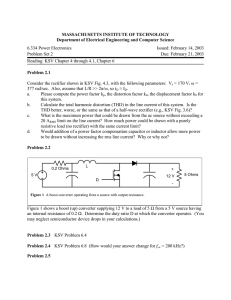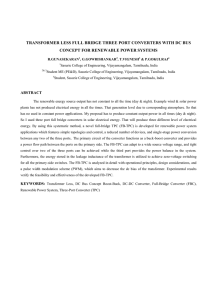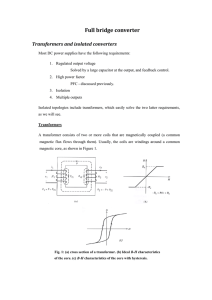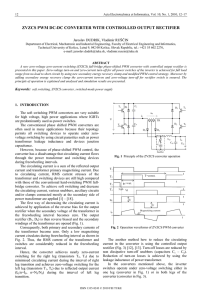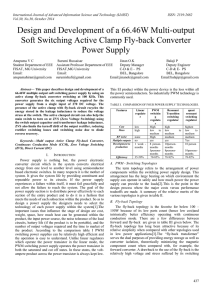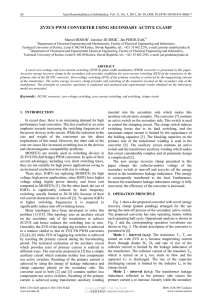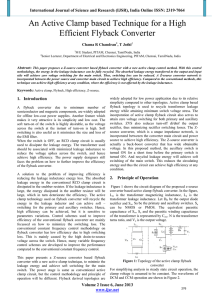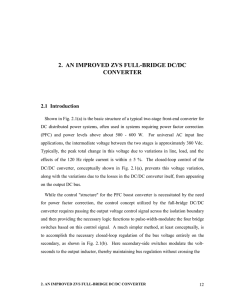MASSACHUSETTS INSTITUTE OF TECHNOLOGY Department of
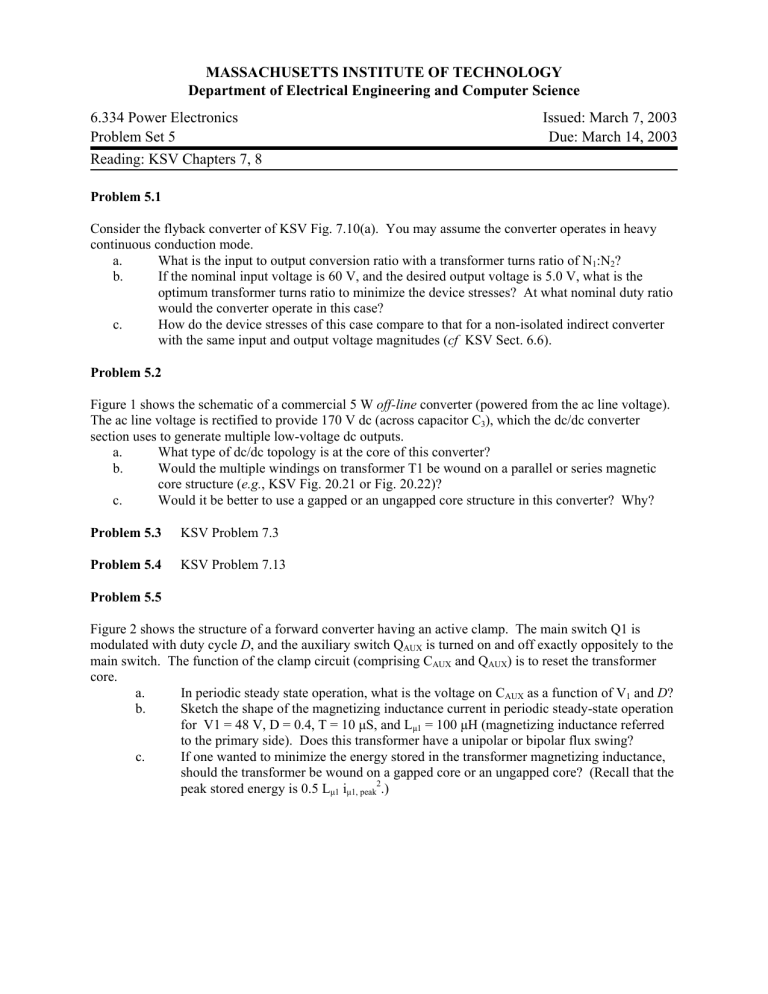
MASSACHUSETTS INSTITUTE OF TECHNOLOGY
Department of Electrical Engineering and Computer Science
6.334 Power Electronics Issued: March 7, 2003
Problem Set 5
Reading: KSV Chapters 7, 8
Due: March 14, 2003
Problem 5.1
Consider the flyback converter of KSV Fig. 7.10(a). You may assume the converter operates in heavy continuous conduction mode. a.
b.
What is the input to output conversion ratio with a transformer turns ratio of N
1
:N
2
?
If the nominal input voltage is 60 V, and the desired output voltage is 5.0 V, what is the optimum transformer turns ratio to minimize the device stresses? At what nominal duty ratio would the converter operate in this case? c.
How do the device stresses of this case compare to that for a non-isolated indirect converter with the same input and output voltage magnitudes ( cf KSV Sect. 6.6).
Problem 5.2
Figure 1 shows the schematic of a commercial 5 W off-line converter (powered from the ac line voltage).
The ac line voltage is rectified to provide 170 V dc (across capacitor C
3
), which the dc/dc converter section uses to generate multiple low-voltage dc outputs. a.
What type of dc/dc topology is at the core of this converter? b.
Would the multiple windings on transformer T1 be wound on a parallel or series magnetic core structure ( e.g.
, KSV Fig. 20.21 or Fig. 20.22)? c.
Would it be better to use a gapped or an ungapped core structure in this converter? Why?
Problem 5.3
KSV Problem 7.3
Problem 5.4
KSV Problem 7.13
Problem 5.5
Figure 2 shows the structure of a forward converter having an active clamp. The main switch Q1 is modulated with duty cycle D , and the auxiliary switch Q
AUX
is turned on and off exactly oppositely to the main switch. The function of the clamp circuit (comprising C
AUX core.
and Q
AUX
) is to reset the transformer a. b.
In periodic steady state operation, what is the voltage on C
AUX
as a function of V
1
and D ?
Sketch the shape of the magnetizing inductance current in periodic steady-state operation c. for V1 = 48 V, D = 0.4, T = 10 µS, and L
µ1
= 100 µH (magnetizing inductance referred to the primary side). Does this transformer have a unipolar or bipolar flux swing?
If one wanted to minimize the energy stored in the transformer magnetizing inductance, should the transformer be wound on a gapped core or an ungapped core? (Recall that the peak stored energy is 0.5 L
µ1
i
µ1, peak
2 .)
(Image deleted)
See p.139 of Krein, Philip. Elements of Power Electronics . Oxford University Press. 1997.
Figure 1 A 5 W off-line converter.
N
1
: N
2
L
C
AUX
C
2
R
+
V
2
Q
AUX
-
V
1
Q1
Figure 2 A forward converter with an active clamp.


